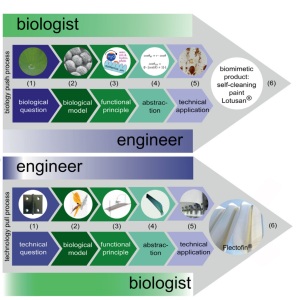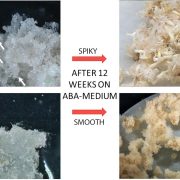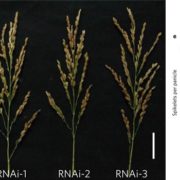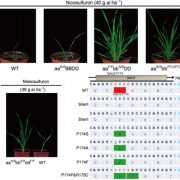Review: Functional morphology of plants – a key to biomimetic applications (New Phytol.)
 Humans have derived inspiration from innumerable corners of the natural world. Plants of diverse forms have inspired many “biomimetics,” or technical products derived from biological models. Speck and Speck review how plant-based biomimetics have developed over time and elaborate on their current use. An interesting perspective from this review is the generalization of the biomimetic process – the identification of a functional principle, its abstraction into a concept, and finally, its transfer into a technical product. The authors describe these plant-based “functional morphologies” as key to biomimetic developments, citing examples from Velcro (inspired by burdock burrs) to the self-cleaning, water-resistant Lotusan paint (inspired by the wax-repairing function of lotus leaves). Especially pertinent as we face climate change is the use of plant-based biomimetics for sustainable products, although the authors caution “…all sustainability claims can only be fulfilled if a special ethos and a respectful approach to nature complement the technological ambitions in practice.” This paper paints a bright picture of the study plant morphology for the promise of a more sustainable future with plant-based biomimetics. (Summary by Benjamin Jin) New Phytol. 10.1111/nph.17396
Humans have derived inspiration from innumerable corners of the natural world. Plants of diverse forms have inspired many “biomimetics,” or technical products derived from biological models. Speck and Speck review how plant-based biomimetics have developed over time and elaborate on their current use. An interesting perspective from this review is the generalization of the biomimetic process – the identification of a functional principle, its abstraction into a concept, and finally, its transfer into a technical product. The authors describe these plant-based “functional morphologies” as key to biomimetic developments, citing examples from Velcro (inspired by burdock burrs) to the self-cleaning, water-resistant Lotusan paint (inspired by the wax-repairing function of lotus leaves). Especially pertinent as we face climate change is the use of plant-based biomimetics for sustainable products, although the authors caution “…all sustainability claims can only be fulfilled if a special ethos and a respectful approach to nature complement the technological ambitions in practice.” This paper paints a bright picture of the study plant morphology for the promise of a more sustainable future with plant-based biomimetics. (Summary by Benjamin Jin) New Phytol. 10.1111/nph.17396








